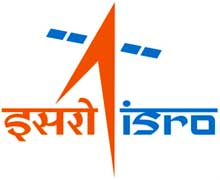February 2019 Science and Technology
Sakshi Education

- Iran launches cruise missile from submarine during drill
Iran has launched a cruise missile from a submarine for the first time during an ongoing annual military drill in the Strait of Hormuz.
The launch on 24 February 2019 and released an image showing a green submarine on the surface of the water launching an orange missile.
It says other submarines have the same capability.
Iran frequently touts its military arsenal, much of which is manufactured locally because of international sanctions.
The Strait of Hormuz, at the mouth of the Persian Gulf, is a crucial bottleneck for global energy supplies, with about a third of all oil traded by sea passing through it.
Tensions have risen since the U.S. withdrew from Iran’s 2015 nuclear agreement with world powers and restored wide-ranging sanctions.
- Travel on a jet plane, using a little cooking oil
Your used cooking oil could help fly a jet in the near future. The Dehradun-based Indian Institute of Petroleum has successfully finished a pilot test to convert used cooking oil into bio-aviation turbine fuel (Bio-ATF), which can be blended with conventional ATF and used as aircraft fuel.
The Institute collected used cooking oil from caterers and hotels in Dehradun for the pilot, which has now set the platform for commercial use of the technology.
The test assumes importance as the Food Safety and Standards Authority of India (FSSAI) has launched the Repurpose Cooking Oil (RUCO) initiative to collect and convert used cooking oil into bio-fuel.
Repurpose Used Cooking Oil (RUCO)
- The Food Safety and Standards Authority of India (FSSAI) launched RUCO (Repurpose Used Cooking Oil), an initiative that will enable collection and conversion of used cooking oil to bio-diesel.
- The initiative has been launched nearly a month after the food safety regulator notified standards for used cooking oil.
- FSSAI may also look at introducing regulations to ensure that companies that use large quantities of cooking oil hand it over to registered collecting agencies to convert it into biofuel.
- Under this initiative, 64 companies at 101 locations have been identified to enable collection of used cooking oil.
- For instance: McDonald’s has already started converting used cooking oil to biodiesel from 100 outlets in Mumbai and Pune.
- The food safety body says that by 2020, it should be possible to recover about 220 crore litres of used cooking oil for conversion into bio-fuel.
- Reducing the re-use of cooking oil in the food industry will have positive public health outcomes and its conversion into Bio-ATF will help the aviation sector reduce its carbon footprint.
- New NASA Mission selected
NASA selected a $42 million mission, atmospheric wave’s experiment that will help scientists understand and ultimately, forecast the vast space weather system around our planet.
It will be launched in august 2022, attached to the exterior of the earth –orbiting international space station (ISS)
AWE will focus on colorful bands of light in Earth’s atmosphere called airglow.
- ISRO launches GSAT31 from French Guiana
India’s communication satellite GSAT-31 has been launched successfully from French Guiana. The Ariane-5 rocket lifted off with it from Kourou Launch Base at 2:31 am Indian time, and in 42-minutes, placed it in the intended Geosynchronous Transfer Orbit.
 It was immediately taken control by Indian Space Research Organization ISRO scientists from its Hassan facility in Karnataka. After bringing the satellite to its final geostationary orbit using the usual orbit-raising manoeuvres in the next few days, it will be made operational.
It was immediately taken control by Indian Space Research Organization ISRO scientists from its Hassan facility in Karnataka. After bringing the satellite to its final geostationary orbit using the usual orbit-raising manoeuvres in the next few days, it will be made operational.
ISRO chairman Dr Sivan has said, GSAT-31 will provide transponder capacity for DTH television and connectivity to services like VSATs for ATMs, stock-exchanges, Digital Satellite News Gathering DSNG and e-governance applications. He added, the satellite will also be used for bulk data transfer for a host of emerging telecommunication applications.
The satellite GSAT-31 has the footprint over both mainland India and her island territories. It has an operational life of over fifteen years, offering seamless services by replacing the ageing INSAT-4CR satellite. GSAT-31 is India’s fortieth communication satellite.
Eleven such satellites are already in operation, serving the nation in space. They together make one of the largest constellations of its class in the world. As the transponder requirements are huge, more such launches are in the pipeline, as said by ISRO. GSAT-31 had a lift-off mass of 2536 kg.
Though India’s own GSLV rockets are capable of launching such payloads, ISRO has clarified, the foreign booster’s services have been used keeping in view the urgency attached with it, as the available GSLV rockets have been booked for other important missions like the forthcoming Chandrayaan-2.
Published date : 28 Feb 2019 04:24PM



















